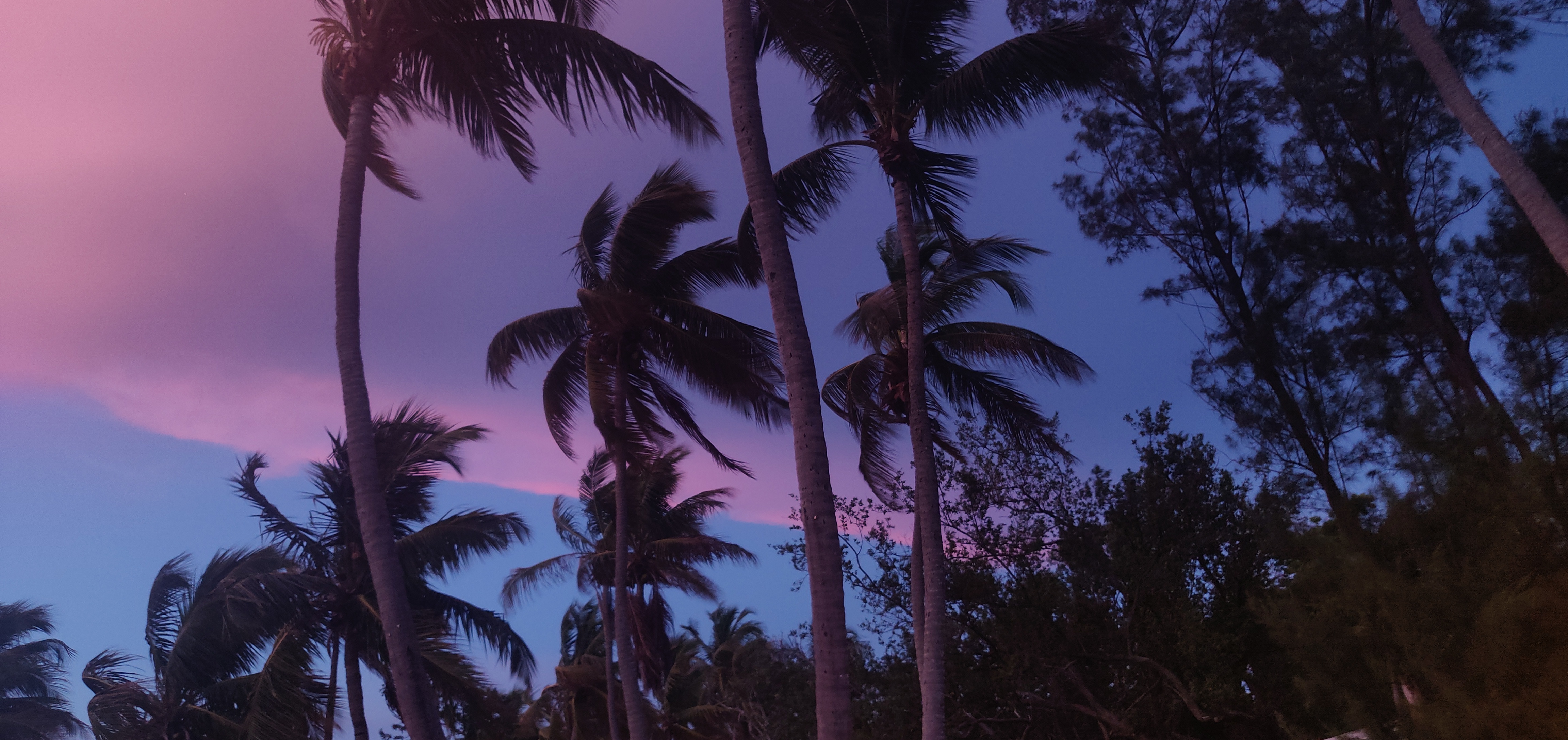
Sunset view of the palm trees swaying in the wind at La Jolla Resort
Summer camp was always a special experience for me as a kid. Growing up, camp was a time for me to escape from the confines of the classroom and explore new possibilities during summer breaks. My parents were great and exposed me to plenty of different kinds of camps, my favorite being one that was held on a sprawling farm called Pepperhill in the backcountry of Kentucky. I begged my parents to sign me up again, year after year, because there was something so reassuring about knowing I had untold adventures awaiting for me every summer. Whether it was horseback riding, gaining experience levels in the pool, shooting archery, or going on caving trips, summers on Pepperhill developed interests for me that I never would have had otherwise. Camp took an already burgeoning personal interest in the outdoors and developed it into a burning curiosity for what lied in store for me, essentially in my backyard.
You may be wondering why I am talking about a camp back in Kentucky on a blog post about REEF and the underwater world. Which is reasonable. I say all this because I see no better way of prefacing why contributing to REEF’s Ocean Explorers Camp was so meaningful for me. A few weeks ago I met 15 campers on a Monday morning, bright and early. We were stationed under a small structure called Grouper Pavilion in John Pennekamp Coral Reef State Park, going through the stages of trying to remember everyone’s names. The first few campers that I interacted with under the pavilion only took interest in me because I sat down at the crafts table and started sketching a (terribly depicted) tropical fish. I did not expect them to be so excited to join in, but soon they were producing drawings way better than mine! Keep in mind these were 3rd graders (the ages of campers ranged up to about 8th grade). I had no idea what I was getting into, to be honest, since I had never acted in this kind of capacity with kids so young before. The closest I had come was helping run a live touch tank in Charleston last summer, but being an actual camp counselor this time around brought with it more responsibilities. I did my best to hang back and let the kids enjoy their activities on the first day, and watched to see how Brittany, our supervisor, handled the kids’ endless questions. I wanted to make sure that I was being a good role model, especially since this was Ocean Explorers Camp – what these kids learned about the ocean during their week with us could truly make a lasting impression. That said, my first day mostly consisted of supervising kayaking and snorkeling activities, so my job was mainly to keep kids from absconding into the mangroves.
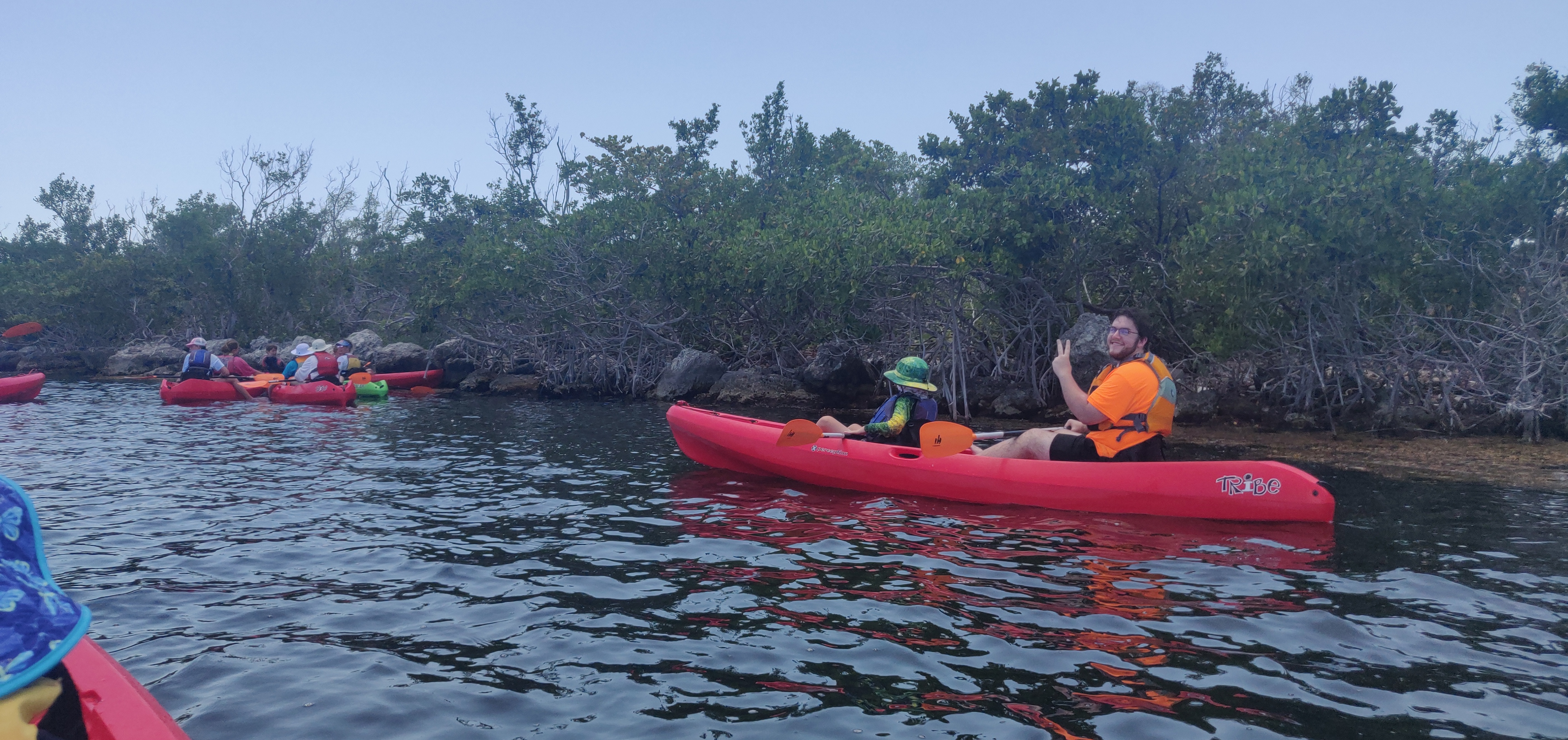
Matt, one of the other interns assisting with Ocean Explorers camp, and his camper Will on our first mangrove kayaking trip
Over the next couple of days at Pennekamp we spent time out on the reef, via glass bottom boat and a snorkeling charter. I learned that there is truly no better way to distract children than by sticking them on a boat where they can look down and see the ocean. Several large nurse sharks and barracudas swam by under the boat, serving to both entrance the kids and provide us interns a much needed break from constantly wrangling runaway children. This was also around the time when a girl named Dakota became particularly enamored with stealing my sunglasses (and occasionally my buff). She and a couple of her friends were actually the same campers who outdrew my feeble attempt at a fish on the first day of camp. I am not sure what was so special about my personal belongings, but she was so proud of wearing them out on the boat that eventually I gave up and let her do her thing.
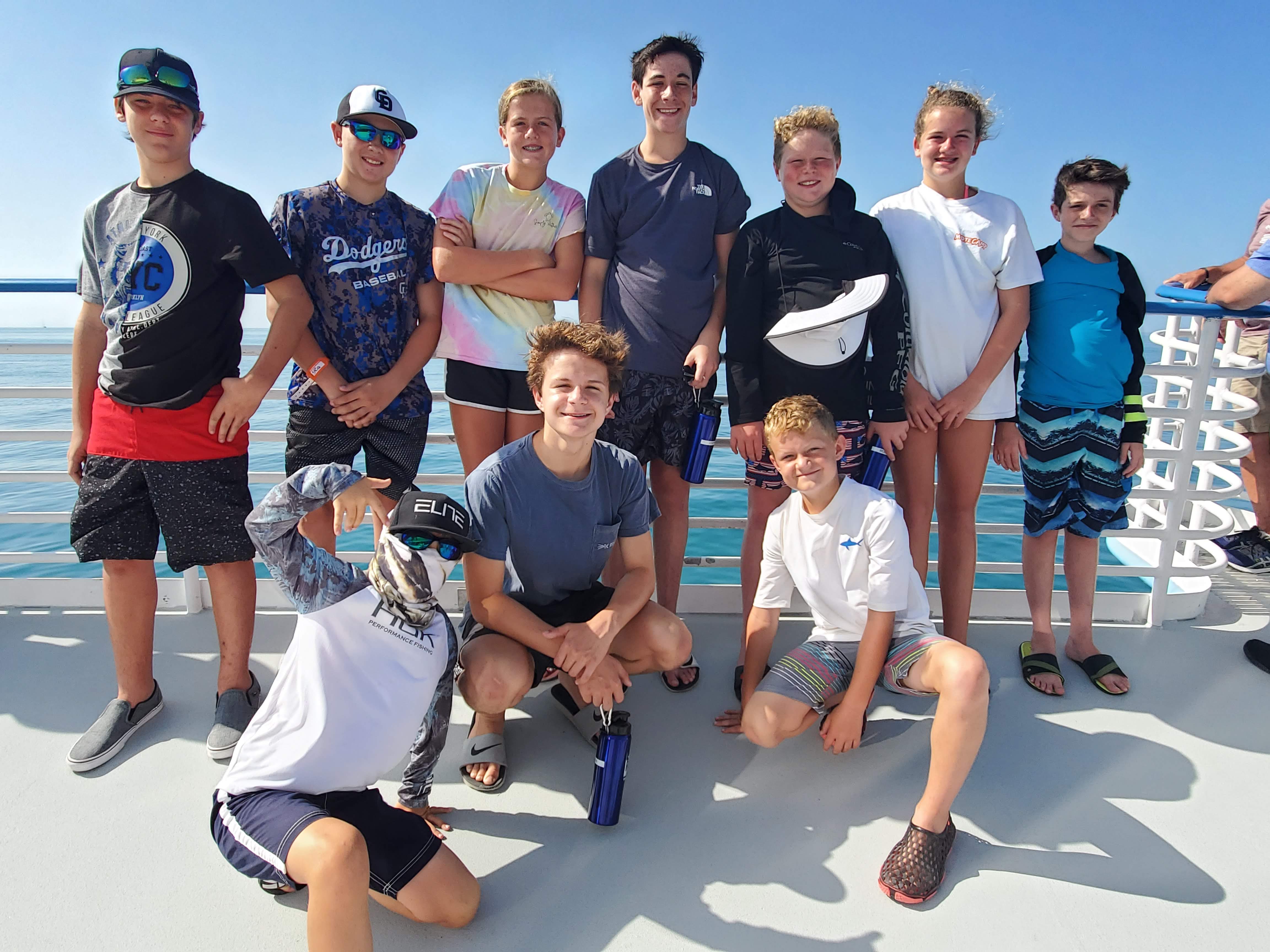
10 out of the 15 campers, at the front of the glass bottom boat. It was never easy to get this many of them in one shot! Photo by Matthew Hall
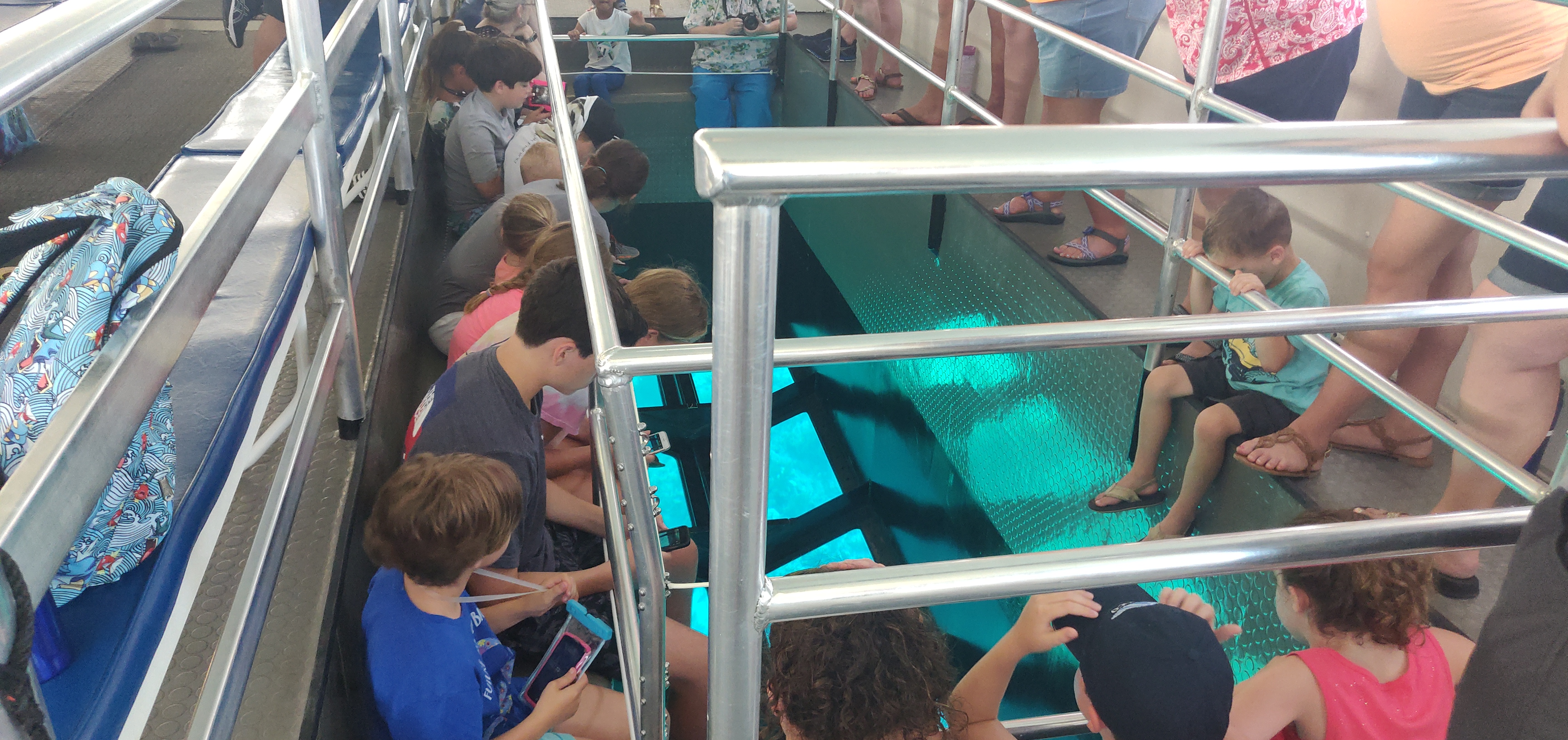
The kids couldn’t keep their eyes off the reef. Nothing like a couple nurse sharks to keep them occupied
On Thursday, we went back out on the boat, but this time the kids got to jump in the water and see the reef up close. Our boat stopped near the locally famous Christ of the Abyss Statue, which has a neat history, as a Pennekamp Park Ranger told us. It was one of a set of three Christ statues sunk around the world, this one sunk in Dry Rocks reef off Key Largo in 1965. The first two were sunk in Italy and in Grenada, to commemorate a fallen diver and as a gift to the people of St. George’s, respectively. I had never visited this renowned site, and I was just as excited as the kids to snorkel around the statue. Making sure the group didn’t stray too far from the boat was a bit stressful, but if anything it was good preparation for my divemaster training this summer! After a nice day out on the water, we enjoyed a relaxing boat ride back to the mainland, where the kids got to witness a pod of dolphins frolicking through the water.
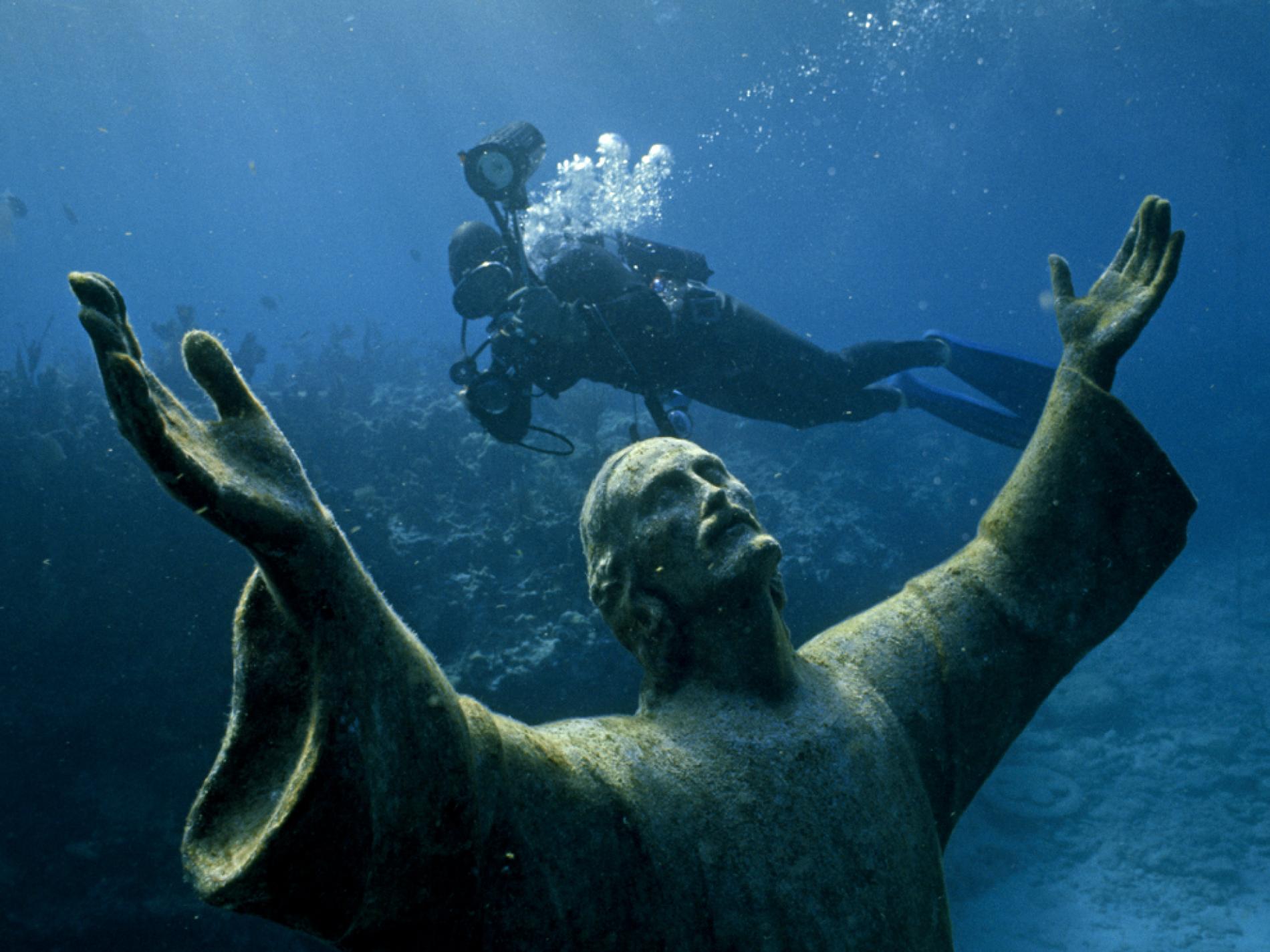
Christ of the Abyss Statue. Photo by Bates Littlehales, National Geographic 1971
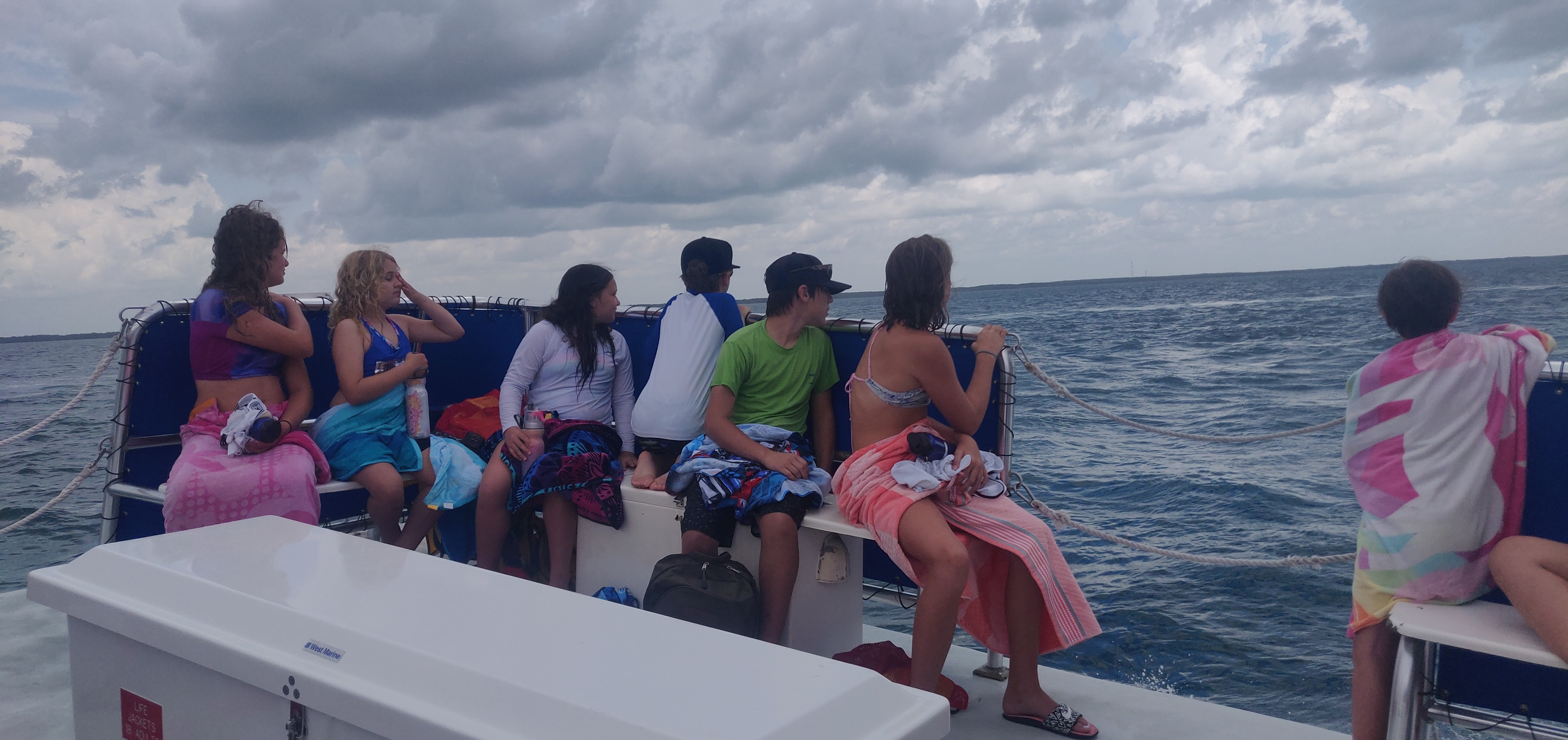
Heading back from snorkeling, the captain sighted a pod of dolphins. Here the kids looked on as we circled back around
And so the final day of camp arrived. On a second kayak trip out to the mangroves, my boat partner was none other than Dakota, the sunglasses-snatcher. She asked if I would be back next year, and I had to tell her maybe, but that I would probably be elsewhere. I could tell she really enjoyed being at camp and didn’t want to leave – a very sweet moment. Near the end of the day when the campers got to visit the gift shop, she ended up spending a decent chunk of her money on a pair of sunglasses and a buff, so she could look “just like Mr. Ben.” I honestly had to keep it together a little bit when she said that, and I knew it was going to be hard to say goodbye to this group. Around this time, I also got to spend more time with the other half of the group I had not interacted with as much throughout the week. They were a bit older than the others, and were genuinely interested in hearing what I had to say about identifying all the different fish in Pennekamp’s mini-aquarium. Gaining experience interpreting facts about tropical marine conservation to an age group I wasn’t used to was a huge plus for me during Ocean Explorers camp.
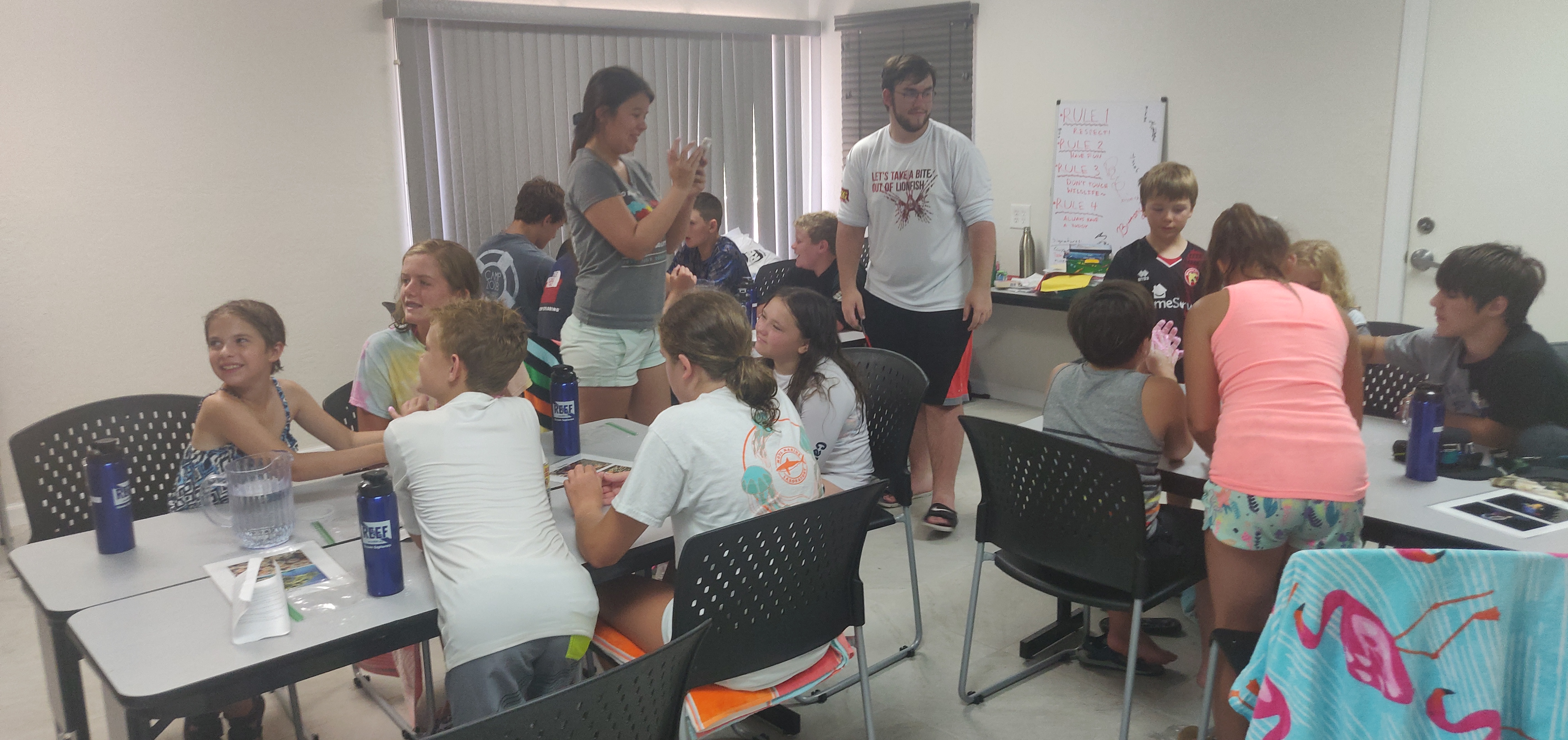
The group learning how to make “slime” (a mixture of water and flour). The slime represented slimy materials that marine fish use all the time, from mucus coating the bodies of moray eels to bubbles that parrotfish sleep in at night
At the end of the day Friday, the campers were tasked with making their own collages using photo prints from the past week. Dakota refused to leave without giving me hers, one that she had put a lot of work into, and my heart melted a little bit more. I realized then that I saw myself in these campers. When I was that age, positive experiences where I could really dive into a new environment were so important, and it was special to be on the other side this time as a counselor. I have actually gone ahead and signed up to help out with another summer camp at the end of the summer, as a nice send-off from my time at REEF.
Aside from summer camp, another huge aspect of REEF’s outreach during the summer are lionfish derbies. My first derby was right after summer camp week, which was a pretty dramatic turnaround. Just after the last camper departed on Friday, we grabbed our dive gear and headed up to Ft Lauderdale for the weekend. Friday night we took it easy and met up with Alli and Moose, the staff members that head the Invasive Species Program at REEF. Early Saturday morning, we headed over to Sea Experience dive shop to help set up for the day’s lionfish dive. At the shop, Alli presented about lionfish, explaining to participants how lionfish invaded the Atlantic, how lionfish have devastated native fish populations, and how we can help fend off the invasion. Many of the participants were fishermen, who were very gung-ho about getting in the water and spearing some invasive fish!
After weathering a very rainy and overcast morning, we set out for our afternoon lionfish dives. This would be my first time spearfishing, as well as my first time participating in a drift dive. I was nervous, but very excited to be out on the boat and gaining new experiences. As we approached the dive site about 5 miles off the coast of Ft Lauderdale, the Miami skyline greeted us through a post-rain glow. Giant striding into the ocean with that scenery around me was surreal, and it only got more exciting as we descended to ~80 feet. The ocean floor was very different than what I was used to on the reefs surrounding the Keys – some of the same fish and coral species were scattered across the bottom, but the terrain was flat and unforgiving. Additionally, the concept of having to let the current take me where it pleased was humbling. Not so humbling, however, was being able to spear my first lionfish. I missed the first couple tries and was fairly disheartened, but kept at it and was able to get a great shot into a sizeable fish. Lionfish are so unused to being predated in the Atlantic that it was hardly a hunt at all, but nevertheless I felt a rush of excitement. I was suddenly reminded of why diving is so rewarding for me – there is nothing quite like being able to explore and contribute to scientific efforts. It never hurts to be carrying a spear underwater either.
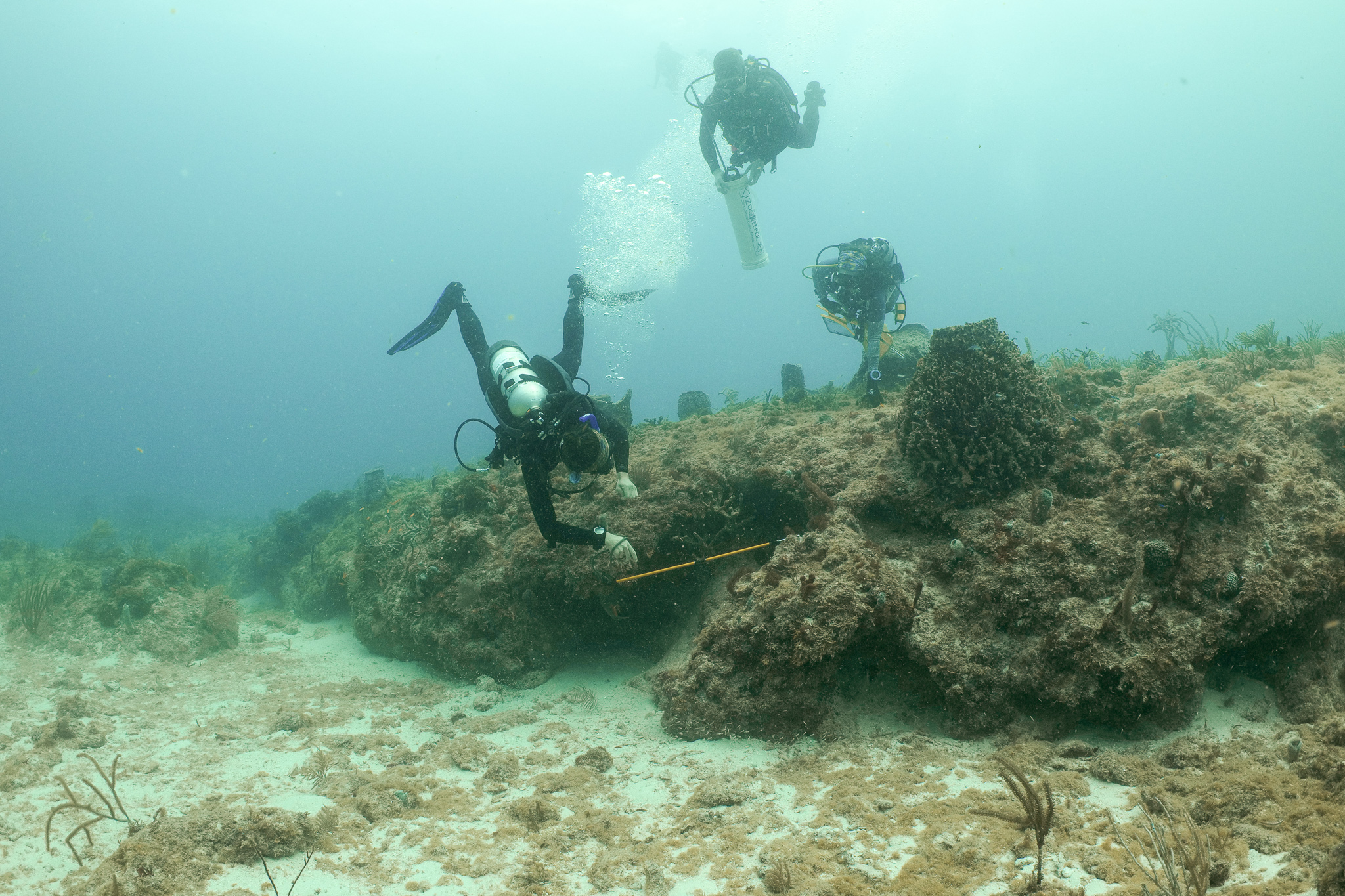
Me spearing my second lionfish off the coast of Ft Lauderdale. Notice how my hand is not actually around the spear – don’t do that! The lionfish could have easily swum off with the spear in it (not exactly ideal). Photo by Tom Sparke
On Sunday, the festivities really began with the Ft Lauderdale Derby. Thirty total divers brought in 417 invasive lionfish (you can read more about that here)! As part of the team helping measure each catch, this meant I was chucking hundreds of lionfish up onto a table for Moose to process. Team members looked on eagerly to see if they brought in the biggest fish, since there were awards for biggest/smallest catches, as well as most fish caught. The biggest catch ended up being 392 mm, or about 1.3 feet! The event was a whirlwind of activity, but it was a great chance to see citizen science in action. Each catch and its measurements were logged, which will help contribute to an ongoing project to see how many lionfish are present off the coasts of Florida. A large part of why I was excited to take this internship was the ability to help out with events that truly engage the local community, and this was a perfect example of that. I am very much looking forward to the Sarasota Derby being held at Mote Marine Laboratory this coming weekend.
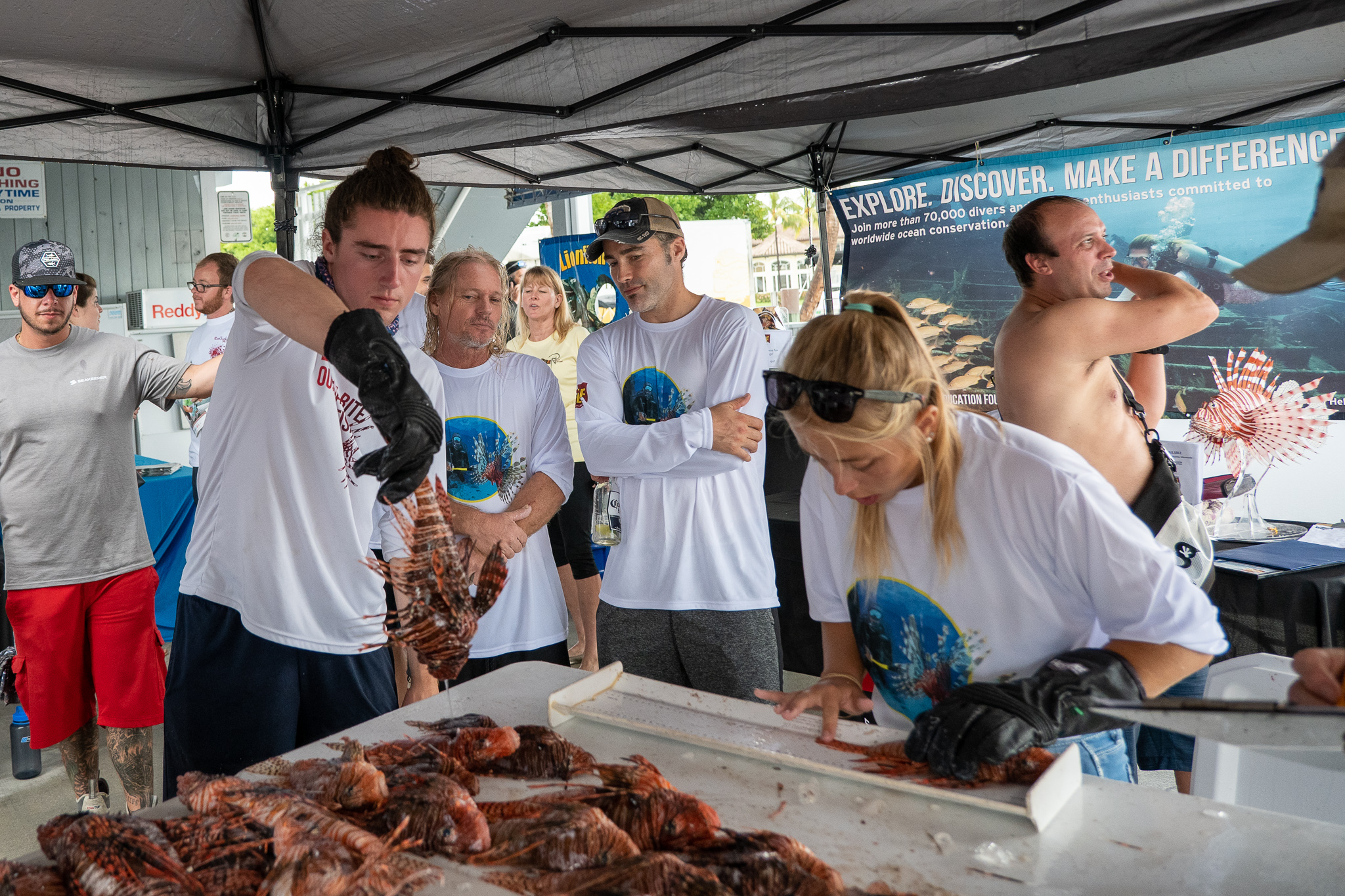
Me and Moose handling lionfish at the Derby, with team members looking on
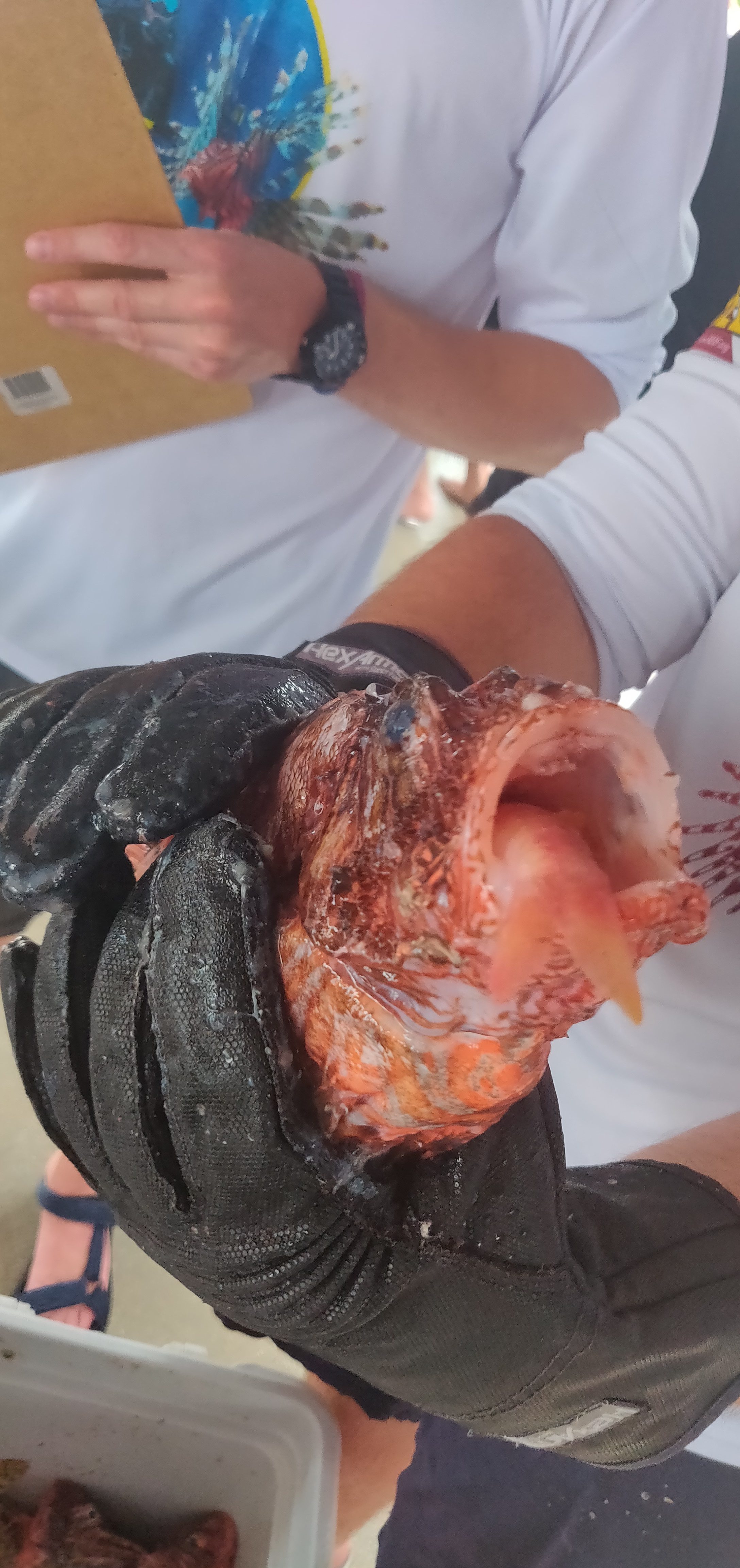
A lionfish that was in the middle of eating a goatfish too big for its stomach. Invasive lionfish are known to be gluttonous, eating just about anything that fits in their mouths
It is strange to think I only have about a month left as a REEF intern – there are so many projects going on here, a few of which I will center my upcoming blog posts about. Of particular interest to me is the Volunteer Fish Survey Project, which I am planning on committing much of my time to in the next several weeks. I am also hoping to team up with Michael, the current National Parks Service Intern, for a day, so stay tuned for that. I would also recommend reading his excellent post about Isle Royale National Park!
Lastly, below are some stray photos from fish survey dives I have been doing while not corralling kids or spearing lionfish:
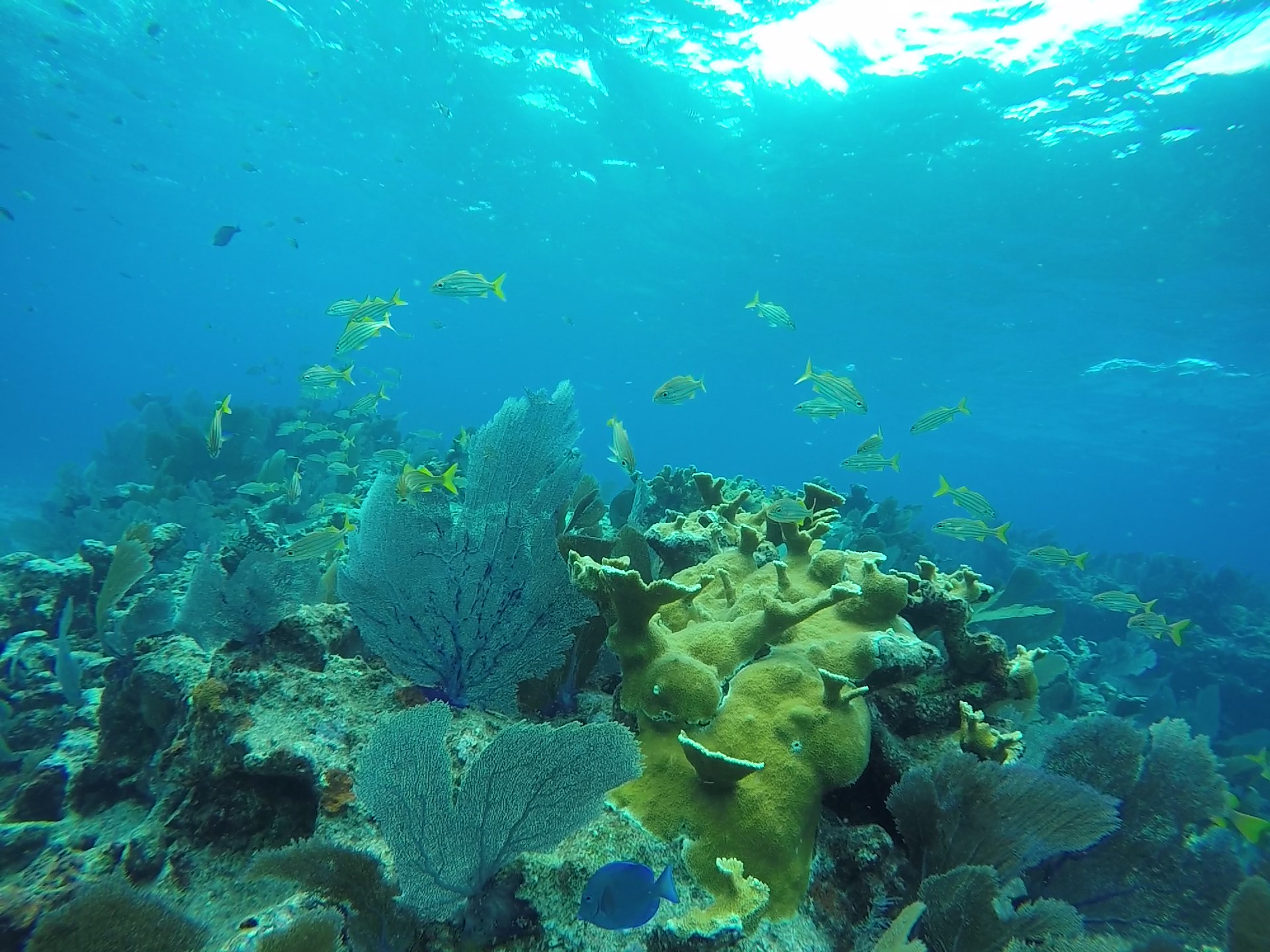
My favorite photo I have taken so far, albeit without any color correction. I love seeing healthy Acropora palmata (elkhorn coral) out on the reefs, as that can be few and far between now in the Keys. Coral Restoration Foundation is doing great things to help restore this species – I hope to volunteer with them soon!
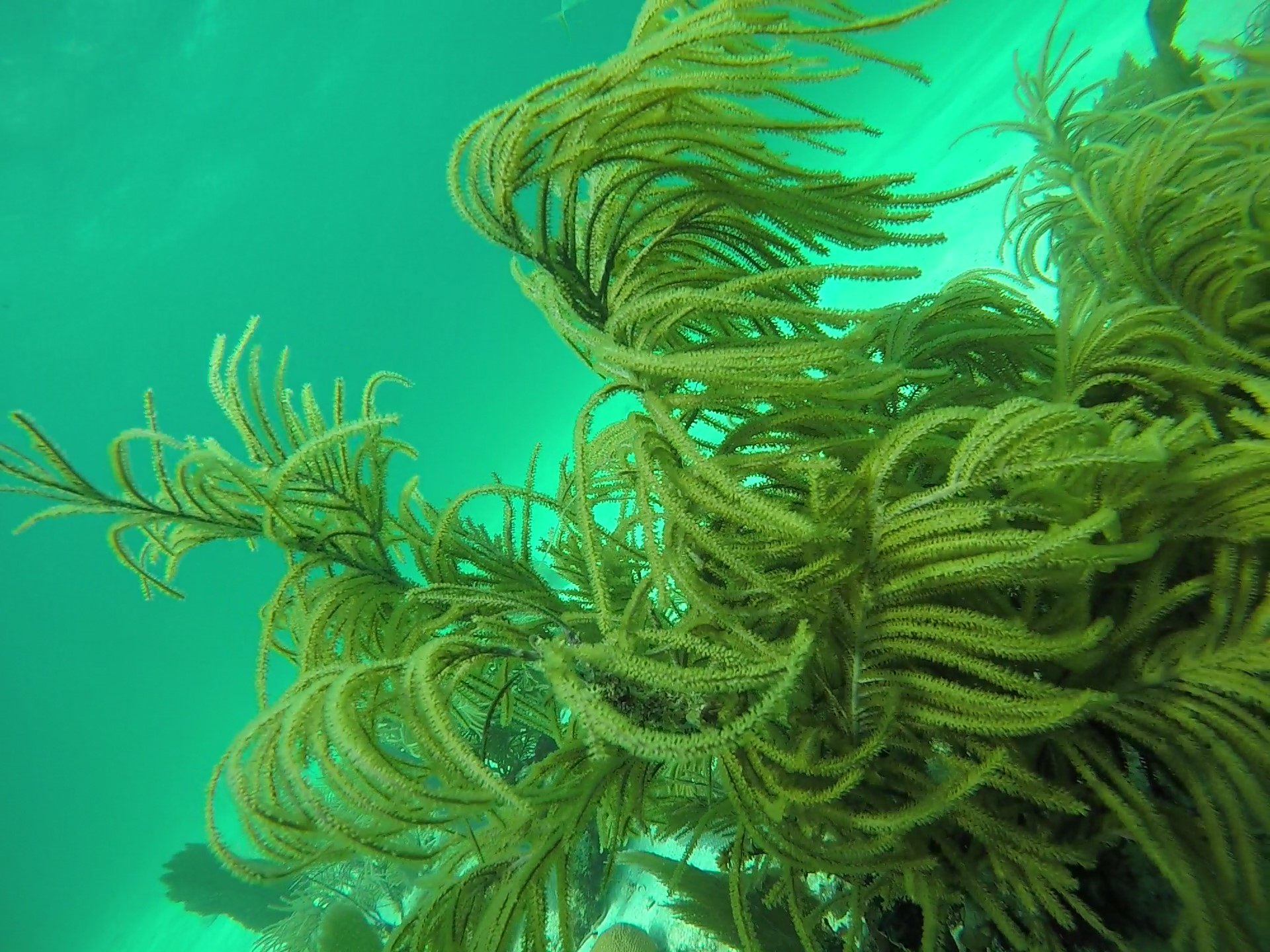
Flowing gorgonian


Fantastic description of your busy summer! So glad I found this. What a wonderful beginning (?) of your future career!
Thank you!!